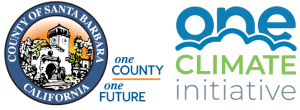Overview
The County is working towards energy assurance through coordinated state and local action and community preparedness. These energy assurance strategies are organized in three categories.
Strategy Categories
Leading by Example
How the County is modeling best practices for energy assurance for County facilities through energy efficiency and demand response, solar energy, and battery storage.
Some of the strategies are a continuation of existing County and community efforts. Others are new approaches. Where possible, the strategies complement or coordinate with other County plans as shown below.

Related County Plans
General Services
- Sustainability Action Plan for County Facilities (2010)
- Zero Net Energy Facilities Resolution (2014)
- Energy Efficiency Standards Policy (2016)
Sustainability
- Energy and Climate Action Plan (2015)
- Strategic Energy Plan (2019)
- 2030 Climate Action Plan (in progress)
Long-Range Planning
- Climate Change Adaptation Plan (in progress)
- Climate Change Vulnerability Assessment (2021)
- Comprehensive Plan Energy Element (2015)
